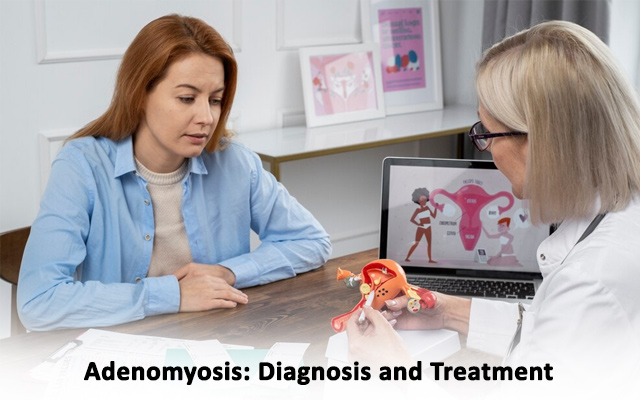Adenomyosis is a gynaecological condition that occurs when the tissue that normally lines the uterus (the endometrium) grows into the muscular wall of the uterus (the myometrium). This condition can result in various symptoms, including heavy menstrual bleeding, severe cramping, and pelvic pain, which can impact a woman’s quality of life. While adenomyosis is common, it is often misunderstood and underdiagnosed, making early detection and proper treatment essential.
Symptoms of Adenomyosis
The symptoms of adenomyosis can vary. Some women may experience mild discomfort, while others suffer from more severe signs. The most common signs are:
- Heavy Menstrual Bleeding: Women with adenomyosis often experience prolonged or excessively heavy periods (menorrhagia), leading to anaemia and fatigue.
- Severe Pelvic Pain: Intense cramping, often worse than typical menstrual cramps, is common. This pain can occur before, during, or after menstruation.
- Chronic Pelvic Pain: Some women may experience constant, dull pelvic pain even when not menstruating.
- Pain During Intercourse: Deep penetration during sexual intercourse can be painful for women with adenomyosis.
- Enlarged Uterus: In some cases, the uterus may become enlarged, which can lead to a sensation of fullness or bloating.
It’s important to note that some women with adenomyosis may not have noticeable symptoms, making diagnosis more challenging.
Diagnosis of Adenomyosis
Diagnosing adenomyosis involves a combination of a medical history review, physical examination, imaging tests, and sometimes, a biopsy.
- Medical History and Physical Exam: The doctor will begin by asking about menstrual history, pain patterns, and any other symptoms. A pelvic exam might be performed to check for an enlarged uterus or tenderness.
- Ultrasound: A pelvic ultrasound is one of the most common imaging techniques used to identify adenomyosis. It can reveal an enlarged uterus or irregularities in the uterine wall, which are suggestive of the condition.
- MRI (Magnetic Resonance Imaging): An MRI is often considered the gold standard for diagnosing adenomyosis. It provides a detailed image of the uterus and can clearly show areas where endometrial tissue has infiltrated the myometrium.
- Endometrial Biopsy: In some cases, a biopsy may be done to rule out other conditions, such as uterine cancer, though this is not a routine part of adenomyosis diagnosis.
Treatment Options for Adenomyosis
Treatment for adenomyosis depends on the severity of symptoms, the woman’s age, and her fertility goals. There are both medical and surgical treatments available.
Medical Treatments
- Pain Relief: Nonsteroidal anti-inflammatory drugs (NSAIDs) like ibuprofen are often recommended to alleviate pain and reduce inflammation.
- Hormonal Therapy: These include birth control pills, hormone-releasing intrauterine devices (IUDs), and hormone therapy, which can help reduce bleeding and control the growth of endometrial tissue. These treatments help by thinning the endometrial lining, which can alleviate symptoms.
- GnRH Agonists: These medications induce a temporary menopause-like state by suppressing ovarian hormone production. While effective at reducing symptoms, GnRH agonists are typically used for short periods due to their side effects, such as bone density loss.
- Aromatase Inhibitors: These medications, often used for breast cancer treatment, can help lower estrogen levels and slow down the growth of endometrial tissue.
Surgical Treatments
- Hysterectomy: For women with severe adenomyosis who no longer wish to have children, a hysterectomy (removal of the uterus) may be considered. This is the only definitive cure for adenomyosis and is typically recommended when other treatments fail.
- Conservative Surgery: In some cases where there is a single site with an adenomyoma, conservative surgery may be an option to remove adenomyosis tissue while preserving the uterus. Especially in cases who want to conserve their fertility. However, this is a complex procedure with limited success.
Conclusion
Women experiencing symptoms like heavy periods, severe pelvic pain, or pain during intercourse could consult with Dr. Smita Jadhav, the best female gynecologist doctor in Salt Lake, to determine the best course of action. With proper management, most women with adenomyosis can find relief and lead normal, healthy lives.


